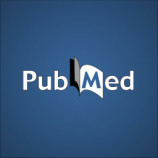Abstract
 OBJECTIVES:
OBJECTIVES:
Little is known about cannabis use in hunter-gatherers. Therefore, we investigated cannabis use in the Aka, a population of foragers of the Congo Basin. Because cannabis contains anthelminthic compounds, and the Aka have a high prevalence of helminthiasis, we also tested the hypothesis that cannabis use might be an unconscious form of self-medication against helminths.
METHODS:
We collected self- and peer-reports of cannabis use from all adult Aka in the Lobaye district of the Central African Republic (n = 379). Because female cannabis use was low, we restricted sample collection to men. Using an immunoassay for Δ9-tetrahydrocannabinol-11-oic acid (THCA), a urinary biomarker of recent cannabis consumption, we validated cannabis use in men currently residing in camps near a logging road (n = 62). We also collected stool samples to assay worm burden. A longitudinal reinfection study was conducted among a subsample of the male participants (n = 23) who had been treated with a commercial anthelmintic 1 year ago.
RESULTS:
The prevalence of self- and peer-reported cannabis use was 70.9% among men and 6.1% among women, for a total prevalence of 38.6%. Using a 50 ng/ml threshold for THCA, 67.7% of men used cannabis. Cannabis users were significantly younger and had less material wealth than the non-cannabis users. There were significant negative associations between THCA levels and worm burden, and reinfection with helminths 1 year after treatment with a commercial anthelmintic.
CONCLUSIONS:
The prevalence of cannabis use among adult Aka men was high when compared to most global populations. THCA levels were negatively correlated with parasite infection and reinfection, supporting the self-medication hypothesis. Am. J. Hum. Biol., 2015. © 2015 Wiley Periodicals, Inc.
© 2015 Wiley Periodicals, Inc.
- PMID:
- 26031406
- [PubMed – as supplied by publisher]

